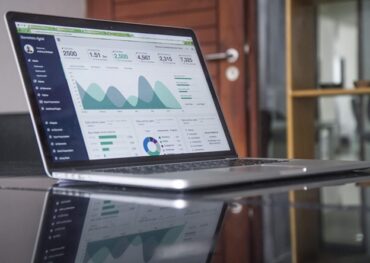
Digital twins offer companies the opportunity to test out new 5G environments and conduct maintenance on existing rollouts without significant disruption.
Communication service providers face many challenges when designing, planning, deploying, and maintaining 5G networks and services. Increasingly, some are turning to digital twins to help them find service gaps, determine optimal antenna placements, better meet customer demands, and much more.
The challenge with such an approach is that there are many aspects to consider and technologies to select when implementing digital twin models. To address this, a Valuer report recently published on IoT Practitioner aims to shed light on the digital twin ecosystem. The result is a fascinating look at where 5G might blossom thanks to these virtual representations.
Featured Resource: The Future of Digital Twins [View Now]
The report’s main focus
The publication looked at Valuer’s database of over 600,000 companies to find those with relevant information about digital twins. The survey wanted to identify big picture and niche solutions within the innovation ecosystem. All the companies in the final report have existing solutions relevant to the sector and proof of concept.
The companies shared some common characteristics. Although a range of company types was present, the averages looked like this:
- Three main countries represented: Companies in the United States outpaced most other countries, followed by India and the United Kingdom.
- Companies are relatively new: The average founding date of relevant companies is 2016, with a range between 1997 and 2021.
- Millions in funding: The average funding for companies was $18,177,106.
- Small company sizes: Nearly half of the relevant companies boast a small team size—10 people or fewer. Only a tiny percentage of companies held large teams of dozens or hundreds.
Looking at relevant use cases reveals the extent of digital twins potential
The report then moved out of the macro to focus on five specific use cases. These outline how digital twin technology and 5G play out in the real world when funding settles, and companies get to work.
Arup
This London-based company began in 1946, offering a B2B and B2G model. The company has evolved with new advances in IoT and now leverages 5G digital twin technology to deliver more accurate information gathering and mockups for its services. Its newest offering, Neuron, uses IoT sensors with integrated BIM to gather up to the minute sense data. It boasts centralized asset management and performance control even across highly complex systems and learning algorithms that further optimize maintenance and adjustments.
Arup is an example of how companies can evolve to leverage new technologies. Though the company was founded decades before the first mainstream computer, it now provides a powerful market case with Neuron.
Digital Twin Sim
This San Diego-based company advises telecommunications companies. It focuses on wireline, fixed wireless, mobile operators, OEM, and others. As 5G rolls out, companies may not know how to proceed or have visibility into the nuances of switching over in their particular sector. Digital Twin Sim uses a portfolio of tools, including a digital twin model, to help companies make decisions and understand the full impact of any proposed changes. This company represents a new wave of consultants helping large companies decide where and how to invest.
OpenTower
The Pennsylvania-based company offers purpose-built life cycle management software applications for telecom towers. It supports telecoms during the 5G rollout through digital twin technology and 3D representation. OpenTower provides an example of a company supporting digital transformation through AI-driven software solutions that allow all domain experts to manage their operations. Digital twin capabilities form a component of the company’s overall software capability.
Scalable Network Technologies
Founded in 1999, this California-based company provides digital twin modeling and simulation solutions. Their market covers defense, infrastructure, and autonomous technology sectors. As a B2B and B2G company, Scalable provides digital twin technology for testing in a low-risk, low-cost setting for companies with high security and infrastructure needs (military or education organizations, for example). In this use case, clients can leverage digital twins to reduce risk to the organization in deploying new solutions or assessing existing ones.
Spirent Communications
Another company founded well before the era of personal computers (1936), this UK-based telecommunications company offers automated test and assurance solutions for cybersecurity, networks, and positioning. Spirent’s use case involves leveraging a 5G digital twin to conduct 5G testing in a continuous emulation model. This allows Spirent’s clients to conduct continuous testing and innovation strategies and develop new use-cases on-demand without taxing company resources.
Looking ahead to the 5G market and environment
Digital twins technology offers companies the opportunity to test out new 5G environments and conduct maintenance on existing rollouts without significant disruption. The digital twin ecosystem is relatively new, but the survey shows that well-established companies can offer it as part of an overall digital transformation strategy.
While not a complete surprise, the survey does confirm the potential for telecommunications and other distributed systems to leverage digital twins technologies. 5G continues to roll out, and companies offering this technology could be instrumental in hastening this transformation.
Featured Resource: The Future of Digital Twins [View Now]







